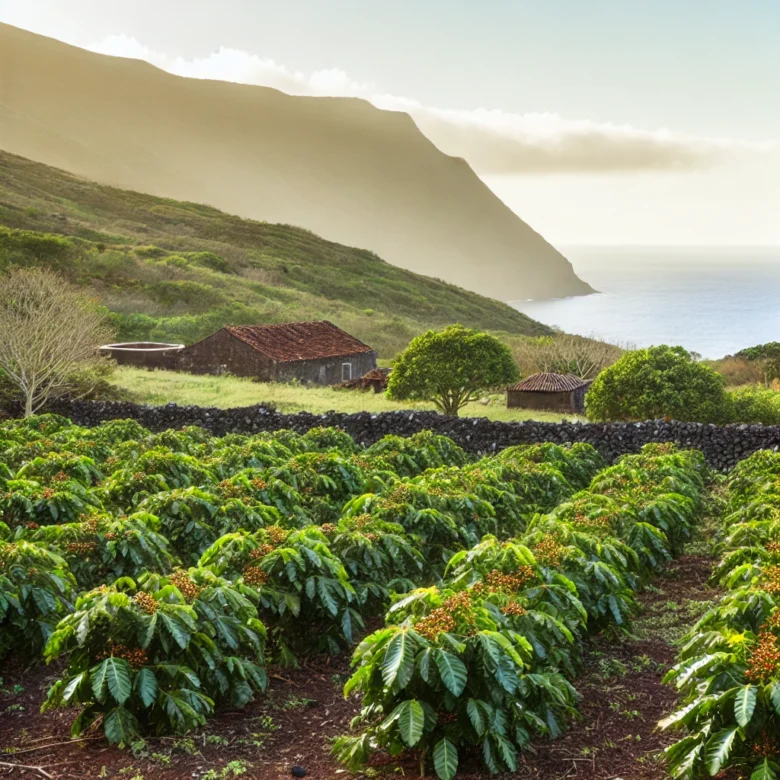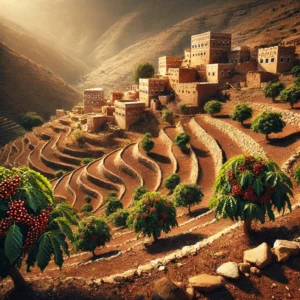Coffee connoisseurs are constantly searching for unique and rare varieties to expand their palates, and one of the most coveted treasures in the coffee world is Saint Helena Coffee. Cultivated on the remote island of Saint Helena, this coffee offers not only a fascinating history but also a distinctive flavor profile that is cherished by those fortunate enough to experience it. In this article, we will delve into the origins, cultivation process, flavor characteristics, and the rarity that makes Saint Helena coffee a true gem in the world of specialty coffee.
The History of Saint Helena Coffee
Saint Helena is a small, volcanic island located in the South Atlantic Ocean, approximately 1,200 miles off the west coast of Africa. The island is perhaps best known as the final exile destination of Napoleon Bonaparte, but its rich volcanic soil and ideal climate have also made it an ideal location for growing coffee.
The history of coffee on Saint Helena dates back to the 18th century when the East India Company introduced coffee plants to the island in 1733. The plants originated from Yemen, and the Arabica variety was the foundation of what would become one of the most revered coffee origins in the world. The island’s isolation, combined with the unique environmental conditions, allowed the coffee plants to thrive, and Saint Helena coffee soon became known for its exceptional quality.
The Unique Growing Conditions of Saint Helena
One of the key factors that contribute to the distinctive flavor of Saint Helena coffee is the island’s microclimate. The coffee is grown at altitudes of around 600 to 750 meters above sea level, which provides the perfect combination of cool temperatures, mist, and consistent rainfall. Additionally, the island’s volcanic soil is rich in minerals, which helps to enhance the natural flavors of the coffee beans.
The remote location of Saint Helena also plays a significant role in the coffee’s uniqueness. Because the island is so isolated, there is minimal risk of cross-pollination with other coffee varieties, allowing the Arabica plants to remain pure and untainted by outside influences. This, combined with the island’s pristine environment and careful cultivation practices, results in a coffee that is truly one-of-a-kind.
The Cultivation and Processing of Saint Helena Coffee
The cultivation of coffee on Saint Helena is a meticulous process that requires a great deal of care and attention. The coffee is grown on small family-owned farms, where the farmers take great pride in their work and ensure that every step of the process is carried out with precision.
The coffee cherries are hand-picked to ensure that only the ripest cherries are selected for processing. After harvesting, the cherries are washed in pure, mineral-rich spring water from the island’s natural springs. This washing process is an essential step in preserving the coffee’s bright and clean flavor profile.
Once the cherries have been washed, they are sun-dried on raised drying beds. This traditional drying method helps to enhance the natural sweetness and acidity of the beans, resulting in a well-balanced cup of coffee with complex flavors.
The Flavor Profile of Saint Helena Coffee
Saint Helena coffee is often described as having a delicate and complex flavor profile, with notes of citrus, floral undertones, and a subtle sweetness. The coffee is medium-bodied with a bright acidity, making it a refreshing and vibrant cup. The clean and crisp finish is another hallmark of this coffee, leaving a pleasant aftertaste that lingers on the palate.
Some of the most common tasting notes associated with Saint Helena coffee include:
- Lemon and orange zest: The bright acidity of the coffee gives it a refreshing citrus-like quality.
- Floral aromas: Hints of jasmine and lavender are often detected in the aroma, adding to the coffee’s complexity.
- Subtle sweetness: A natural sweetness reminiscent of caramel or honey balances the acidity and adds depth to the flavor.
- Nutty undertones: Some cups of Saint Helena coffee may also exhibit faint nutty or almond-like notes.
This combination of flavors makes Saint Helena coffee a favorite among coffee enthusiasts who appreciate a balanced and nuanced cup of coffee.
Why Saint Helena Coffee is So Rare
One of the reasons Saint Helena coffee is so highly sought after is its extreme rarity. The island produces only a small quantity of coffee each year, with an estimated annual production of just 12 to 14 tons. This limited supply, combined with the coffee’s exceptional quality, has made it one of the most expensive coffees in the world.
Several factors contribute to the rarity of Saint Helena coffee. First and foremost is the island’s remoteness. Shipping coffee from Saint Helena to the rest of the world is a logistical challenge, as the island does not have a major commercial port. Coffee shipments must be transported by sea, which can be both time-consuming and costly.
Additionally, the small scale of coffee farming on the island means that production is limited by the number of coffee plants that can be cultivated. Unlike large coffee-producing countries, Saint Helena does not have vast coffee plantations. Instead, coffee is grown on small family farms, which further limits the amount of coffee that can be produced each year.
The cost of production is also a significant factor. Because everything on the island must be imported, from farming equipment to fertilizers, the cost of producing coffee on Saint Helena is considerably higher than in other coffee-growing regions. These higher production costs are reflected in the price of the coffee, making it a luxury item for those who can afford it.
The Future of Saint Helena Coffee
Despite its small scale and limited production, the future of Saint Helena coffee looks promising. In recent years, there has been a renewed interest in specialty coffees, and Saint Helena coffee is perfectly positioned to benefit from this growing trend. As more coffee drinkers seek out unique and rare coffees, the demand for Saint Helena coffee is likely to continue to rise.
Efforts are also being made to increase the island’s coffee production while maintaining the high standards of quality that have made Saint Helena coffee so famous. By expanding the number of coffee plants and improving farming techniques, the island’s farmers hope to increase their output without compromising the integrity of the coffee.
Conclusion
Saint Helena coffee is a rare and exquisite coffee that offers a truly unique experience for coffee lovers. Its delicate flavor profile, rich history, and extreme rarity make it one of the most sought-after coffees in the world. While its price and limited availability may make it a luxury item, those who have the opportunity to try Saint Helena coffee will understand why it is considered a treasure in the world of specialty coffee.
As the world of coffee continues to evolve and grow, Saint Helena coffee stands as a reminder of the incredible diversity and richness that can be found in even the most remote corners of the globe. Whether you are a seasoned coffee connoisseur or simply someone who appreciates a great cup of coffee, Saint Helena coffee is an experience that should not be missed.



